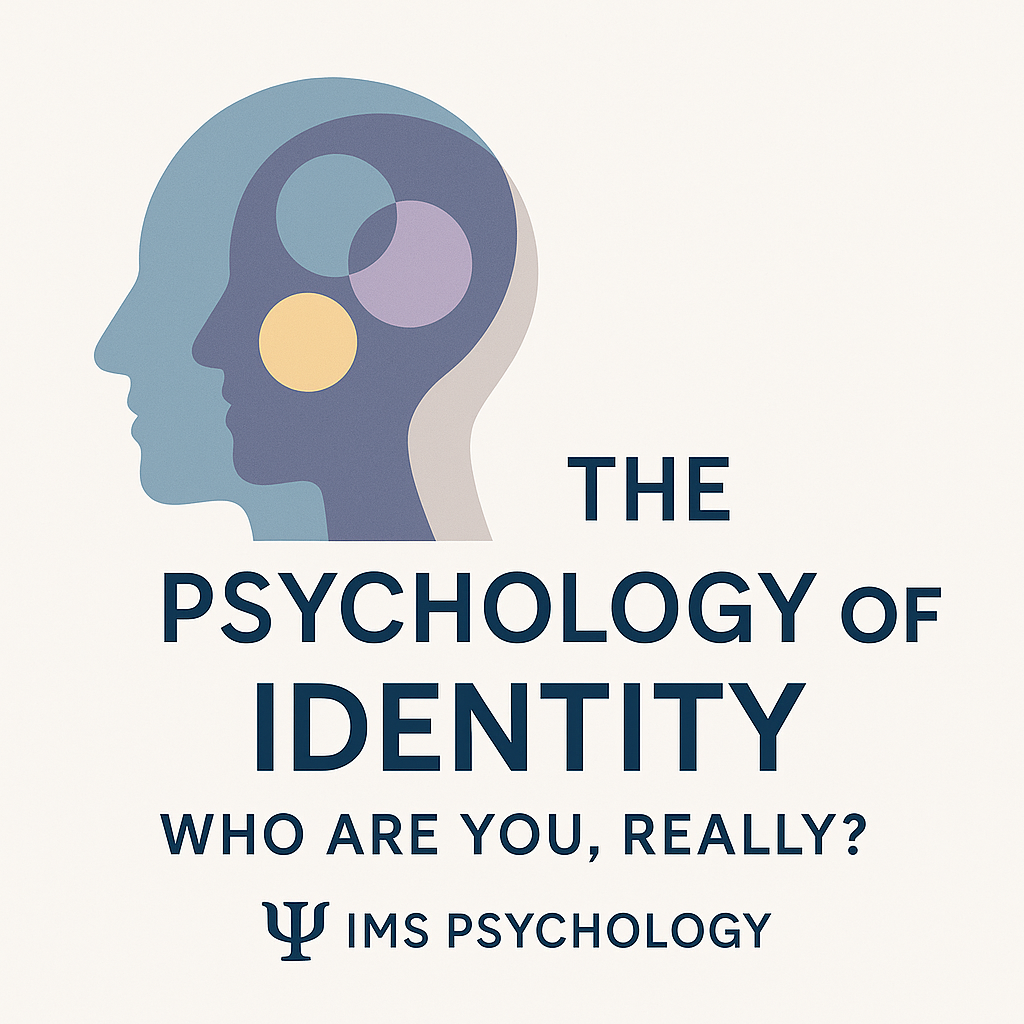
The Psychology of Identity: Who Are You, Really?
Share
The Psychology of Identity: Who Are You, Really?
Identity shapes how we see ourselves and connect with the world. Explore the psychology of identity, its development, and how to navigate the question: Who am I, really?
Introduction: The Lifelong Question of Self
“Who am I?” is one of the most fundamental — and complex — questions of human life. Identity is more than a label or a role; it is the story we tell ourselves about who we are, where we come from, and where we’re going.
Psychology shows that identity is not fixed but shaped by culture, relationships, experiences, and personal choices. Understanding how identity forms can help us navigate challenges like self-doubt, role changes, or feeling “lost” in life transitions.
What Is Identity in Psychology?
In psychology, identity refers to our sense of self — our values, beliefs, roles, and sense of continuity over time. It answers questions like:
-
What makes me unique?
-
What do I stand for?
-
Where do I belong?
Identity is both internal (how we see ourselves) and external (how others see us). It is influenced by personality, culture, gender, relationships, and life experiences.
Theories of Identity Development
Several psychological frameworks help explain how identity forms:
1. Erik Erikson’s Stages of Psychosocial Development
-
Adolescence: Identity vs. Role Confusion — a critical period of exploration.
-
Adulthood: Identity continues to evolve through intimacy, work, and generativity.
2. James Marcia’s Identity Status Theory
-
Identity Diffusion: Lack of direction or exploration.
-
Foreclosure: Accepting others’ expectations without exploration.
-
Moratorium: Active exploration without commitment.
-
Identity Achievement: A clear sense of self after exploration.
3. Social Identity Theory (Henri Tajfel & John Turner)
Identity is shaped by group memberships — nationality, religion, career, or community — influencing self-esteem and belonging.
4. Narrative Identity (Dan McAdams)
Identity is a story we create to give meaning to life experiences, weaving the past, present, and future into coherence.
Factors That Shape Identity
Identity is never formed in isolation — it is shaped by:
-
Family & Early Environment: Childhood experiences set initial self-beliefs.
-
Culture & Society: Norms and expectations influence identity roles.
-
Gender & Sexuality: Integral aspects of self-expression and belonging.
-
Life Experiences: Success, failure, trauma, and growth moments reshape self-concept.
-
Relationships: Friends, partners, and mentors influence how we see ourselves.
The Challenges of Identity
Many people struggle with identity at different life stages:
-
Adolescence: Pressure to “figure out” career, values, and belonging.
-
Adulthood: Role transitions (parenthood, career change, divorce) can unsettle self-concept.
-
Cultural Identity: Balancing multiple cultural influences or navigating identity-based discrimination.
-
Existential Identity: Questions of meaning, purpose, and authenticity.
Psychologists highlight that identity crises are often opportunities for growth and transformation, not failures.
Identity and Mental Health
Identity challenges can deeply affect well-being:
-
Lack of clarity may lead to anxiety, depression, or feelings of emptiness.
-
Strong identity alignment supports resilience, confidence, and purpose.
-
Minority stress (e.g., due to race, gender, or sexuality) can create identity-related stress that impacts mental health.
Therapeutic approaches such as CBT, ACT, and narrative therapy often focus on helping people clarify, reshape, and integrate identity in healthier ways.
How to Explore and Strengthen Your Identity
Practical strategies backed by psychology:
1. Values Exploration
Clarify what matters most to you — not just what others expect. ACT (Acceptance & Commitment Therapy) uses values as anchors for action.
2. Journaling Your Story
Narrative therapy encourages writing your life story to identify themes, strengths, and turning points.
3. Identity Mapping
Create a map of roles (student, friend, parent), values, and group memberships to see the layers of your identity.
4. Experiment & Explore
Identity develops through action. Try new roles, communities, or creative outlets to expand self-understanding.
5. Self-Compassion
Be gentle with yourself during transitions. Identity is fluid — it evolves with time and experience.
When to Seek Support
If identity confusion leads to persistent distress, therapy can provide safe space for exploration. Identity-related therapy often supports people during major life transitions, cultural struggles, or questions around gender and sexuality.
Practical Tools You Can Use Today
IMS Psychology offers downloadable, evidence-based workbooks to support self-discovery. Our [Identity Exploration Journal] provides guided exercises, reflection prompts, and values-mapping tools to help you clarify who you are and who you want to become.
Conclusion: The Ongoing Journey of Self
Identity is not a destination but a journey. It is shaped by history, culture, and choice, but also by how we make meaning of our lives. By exploring values, rewriting personal narratives, and practicing self-compassion, you can create a sense of identity that feels authentic, grounded, and empowering.
Who you are is not fixed — it is continually unfolding. And that’s what makes the question, “Who am I, really?” both challenging and beautiful.
If you’d like structured guidance in exploring your own identity, explore the IMS Psychology workbooks, crafted to turn psychological science into practical tools for everyday life.
written by,
Martin Rekowski (02.10.2025)
External Source
McAdams, D. P. (2001). The Psychology of Life Stories. Review of General Psychology.